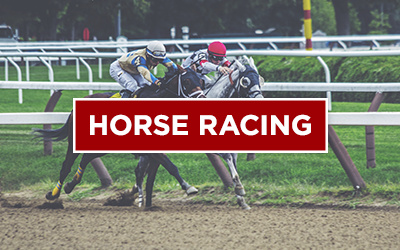 Horse racing is one of the gambling industries longest pastimes. It’s also one of the most popular sports in the world to bet on. In fact, few sports rely on the gambling industry as much as horse racing, with a huge percentage – compared to other sports – stating that they follow it just to have a bet.
Horse racing is one of the gambling industries longest pastimes. It’s also one of the most popular sports in the world to bet on. In fact, few sports rely on the gambling industry as much as horse racing, with a huge percentage – compared to other sports – stating that they follow it just to have a bet.
There is little doubt that whilst the sport is struggling in terms of viewing figures, from a betting perspective, it’s never been stronger. But, things such as increased pressure from animal rights groups and the growing costs for racecourses has put the sport in some danger, so the next 5-10 years could be crucial to make sure that horse racing is able to continue as a stalwart of the betting industry.
Free Horse Racing Bets



Horse Racing Blog
How to Bet on Horse Racing
 The good thing about horse racing is that pretty much all bookmakers are offering extensive coverage of the sport. The bookies are battling it out to try and get you to bet with them over any of their rivals, which is great from a punters perspective.
The good thing about horse racing is that pretty much all bookmakers are offering extensive coverage of the sport. The bookies are battling it out to try and get you to bet with them over any of their rivals, which is great from a punters perspective.
Due to the increase in competition, the bookmakers are having to appeal to a wider audience and with it have come innovations such as live streaming, price boosts, statistical analysis and data, synopsis from platforms such as The Racing Post and even dedicated blogs, often written by former jockeys, trainers and people within the horse racing industry.
Types of Horse Race
There are two main types of horse racing; jumps and flat. The difference between the two is relatively self-explanatory, flat racing is run on flat ground without jumps and jumps racing, of course, is run over jumps (hurdles/fences) and can sometimes be referred to as National Hunt racing.
Flat Racing
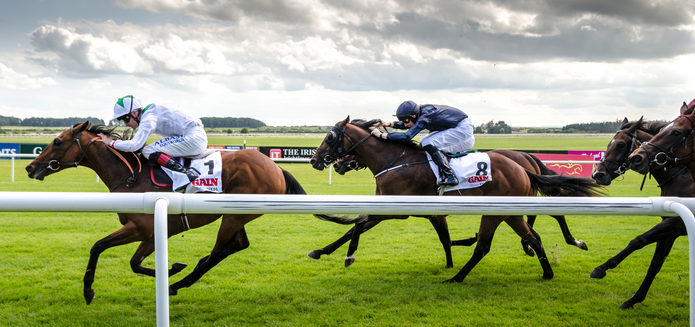
The two different race types require a very different skill set for each discipline. Horses running on the flat are more dynamic and are primarily interested in speed, whereas horses that are sent over jumps are stronger, usually bigger and often have much more of an emphasis on stamina than their flat racing counterparts.
Flat races can be run over a number of different grounds as well, from turf to synthetic and all-weather surfaces. Race distances can range massively too, from as short as 5 furlongs to up to 3 miles. The flat season officially runs from April 2nd to November 5th.
Jumps Racing (National Hunt)
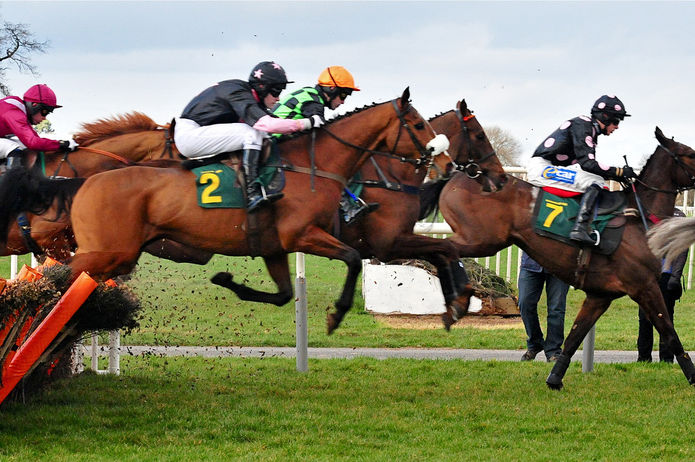
The jumps season is run over a number of different circuits and races, usually broken up into hurdles and steeplechases. The difference is that steeplechases require horses to navigate over a variety of fences including open ditches, water drops and more, whereas a typical hurdles race will only include hurdles.
The National Hunt season runs all year round, from April 24th which coincides with the Sandown Park Gold Cup meeting, signifying the start of the jumps racing calendar.
Handicapping
Sample List of 2018 Grand National Entrants
| Horse Name | Official BHA Rating | Official BHA Allocated Weight |
|---|---|---|
| Definitly Red | 165 | 11st 10lbs |
| Bristol De Mai | 164 | 11st 09lbs |
| Edwulf | 164 | 11st 09lbs |
| Outlander | 163 | 11st 08lbs |
| Minella Rocco | 162 | 11st 07lbs |
| Blaklion | 161 | 11st 06lbs |
| Sub Lieutenant | 160 | 11st 05lbs |
| Anibale Fly | 159 | 11st 04lbs |
| The Last Samuri | 159 | 11st 04lbs |
| Mala Beach | 158 | 11st 03lbs |
Handicapping is one of the most important factors when it comes to horse racing. The idea of handicapping is to make as level a playing field as possible for each race by adding weight to the horse. It is understood that by adding weight it will affect the speed in which a horse can gallop.
With each race a horse earns a rating based on how well they have run in a particular event. The rating will take into consideration things such as the strength of the field, the distance, ground, draw, time of the race, speed of the race and any incidents which may have occurred in that race that could have affected the outcome or performance of a specific horse.
It’s worth noting that as the handicapper, the person who is assigned the job is also allowed to have their own interpretation of what happened and then affect ratings as a result. So, whilst a vast amount of data is compiled, there is also human input into this process.
The rating of the horse is then subjective to a certain weight that they will be required to carry in a race. The role of the handicapper is to assign the right weight to each horse to get as close a finish as possible. In the real world this is pretty much impossible as there could be countless factors as to why a horse does or doesn’t run up to it’s previous level of form.
The handicappers are all part of the British Horse Racing Authority. The team is broken up into several groups within the authority and each are assigned a core group. These groups might include certain weights, classes, ages or race types, with each handicapper being an expert in their field. The handicappers sit and review races that have taken place before assigning weights and ratings as they see fit.
Ante Post vs. Day of Race
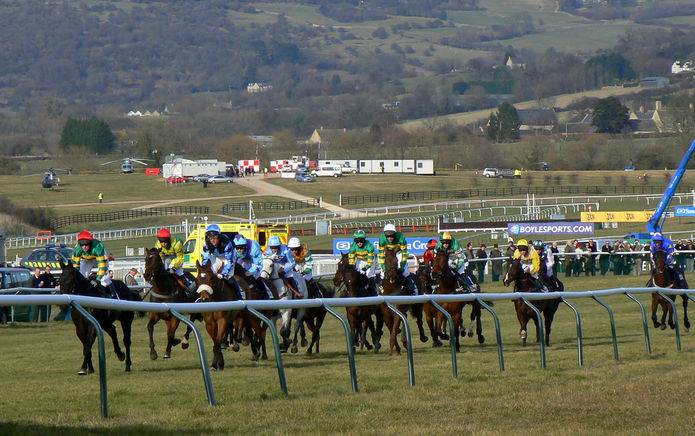
Day of race markets are markets that are held on the day of the race. You usually find that markets switch from ante post to day of race around 9am on the morning of that race. But, there are some circumstances, usually for the larger meetings (Cheltenham Festival, Royal Ascot etc.) where these markets will switch earlier, anything up to 48 hours before that race starts.
It may seem odd to have two separate markets for essentially the same bet, but there is method to the madness. The reason is that with ante post betting you are going in to the race pretty blind in that apart from where the race will be held and a rough idea of which horses will be involved, there’s not a lot of info that will have a huge affect on the outcome. This can include the going, the time of the race, the definitive starting horses, how the horse has behaved in the parade ring, how they settle moving to post, which jockey will be riding and even things such as travel time and rest for the horse.
Ante post markets wont be eligible for non-runner insurance either, meaning if your horse doesn’t run, then you wont get your initial stake back. Whereas, with day of race markets, if your horse doesn’t run for whatever reason, the bet will be void and your stake will be returned.
The flip side is that a Rule 4 won’t be applied to ante post bets, but will be applied to day of race bets. A Rule 4 is a deductions process that will adjust the odds of winning horses or bets should a horse be withdrawn from a race that would in turn affect the odds taken for your bet. The deductions are set and will reflect the odds of the horse that has been withdrawn, worked out as fee per every unit that you stake.
Rule 4 Deductions
| Price of Selection | Scale of Rule 4 Deduction |
|---|---|
| 1/9 or shorter | 90p |
| 2/11 to 2/17 | 85p |
| 1/4 to 1/5 | 80p |
| 3/10 to 2/7 | 75p |
| 2/5 to 2/3 | 70p |
| 8/15 to 4/9 | 65p |
| 8/13 to 4/7 | 60p |
| 4/5 to 4/6 | 55p |
| 20/21 to 5/6 | 50p |
| Evens to 6/5 | 45p |
| 5/4 to 6/4 | 40p |
| 8/5 to 7/4 | 35p |
| 9/5 to 9/4 | 30p |
| 12/5 to 3/1 | 25p |
| 16/5 to 4/1 | 20p |
| 9/2 to 11/2 | 15p |
| 6/1 to 9/1 | 10p |
| 10/1 to 14/1 | 5/1 |
| over 14/1 | No deduction |
For example, a horse withdrawn just before the start at odds of 7/4 will incur 35p removed for every £1 staked on your bet.
Horse Racing Bets
As with all sports, there are a number of betting markets that you are able to bet on within horse racing. The range is actually smaller than most, especially when compared to football, but bookies are still pretty shrewd with knowing what the punters want to bet on and if it makes them money, then they are going to offer it. Below we have listed the common bet types and what they mean.
Starting Price
The Starting Price (SP) is the price that the horse starts the race at. It’s at the point where the bookies close their books and all pre-race bets are stopped.
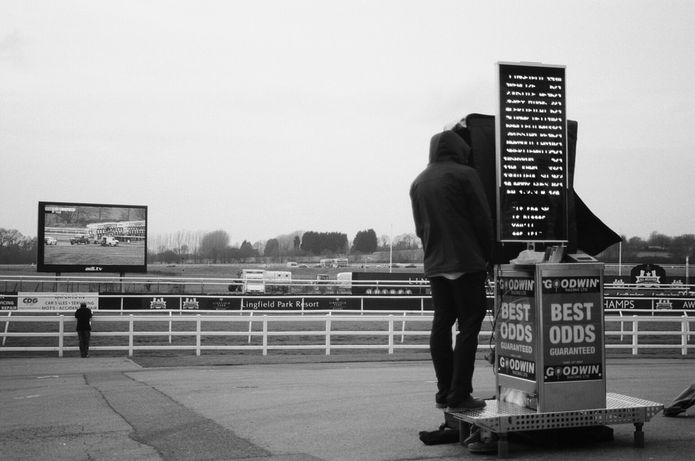
Often the Starting Price is used for punters who think that the odds could potentially drift from their current price and are unable to access a betting facility later in the day to take advantage of this.
It’s also worth noting that a lot of bookies are now offering Best Odds Guaranteed, which works with the starting price. This means, if the price you took on the race that is tied into this offer is lower than the starting price, then the bookmaker will pay out at the larger starting price, ensuring you always get the best price.
Win, Place and Each Way
The win market is the most popular and easiest to understand. You place your bets on the horse that you think will win the race and if they do, then you get paid. If they finish anywhere other than first, your bet loses.
Each Way Betting Terms
| Number of Runners | Race Type | Number of Places | Fraction of Win Odds |
|---|---|---|---|
| 4 or less | Any | Win Only | N/A |
| 5 to 7 | Any | First 2 | 1/4 |
| 8 or more | Non-Handicap | First 3 | 1/5 |
| 8 to 11 | Handicap | First 3 | 1/5 |
| 12 to 15 | Handciap | First 3 | 1/4 |
| 16 or more | Handicap | First 4 | 1/4 |
The place market is where you bet on a horse to finish within a certain number of places. The number of places paid will depend on the size of the race, usually resulting in the Top 2 or Top 3. For this bet, is doesn’t matter if they finish first, second or third, each position will pay the same.
Each way is essentially where your bet is split into two sections; the first is the win market and the second is the place market. If your horse wins the race then you get paid out twice from both the win bet and the place bet. If your horse fails to win, but finishes within the places stated, then you lose the win bet and win the place bet. If your horse fails to win and fails to finish within the specified number of places, then you lose both bets.
The place bet for each way betting will be worked out as a fraction of the odds that you took. Generally the number of places paid will reflect the number of horses in the race, with 5-7 paying 2 places, and 8 or more paying 3 places. As a standard rule, the odds are usually 1/4th to 1/5th of the price taken.
Forecasts and Tricasts
Forecast & Tricast Bet Types
| Bet Type | Number of Selections |
Number of Bets |
Total Bet Cost For £1 Unit Stake |
|---|---|---|---|
| Straight Forecast | 2 | 1 | £1 |
| Reverse Forecast | 2 | 2 | £2 |
| Combination Forecast | 3 | 6 | £6 |
| Straight Tricast | 3 | 1 | £1 |
| Combination Tricast | 3 | 6 | £6 |
Forecast betting is where you need to choose the horses that will both finish first and second, in the correct order. You will also be able to bet on markets called reverse forecasts where you need to select the top 2 horses, but in any order. The latter will pay out at significantly shorter odds than the former.
The tricast bet just takes things one step further, with you having to choose the horses that will finish, 1st, 2nd and 3rd in the correct order. Again, you can choose to bet a combination tricast, which means you need to choose the top 3 horses in any order. It’s worth noting that a Tricast bet with a non-runner will be reduced to a forecast bet, whereas a forecast bet with a runner will be made void and your stake returned.
Full Cover Bets
Multiple Bet Types
| Bet Type | Number of Selections | Number of Bets | Total Cost For £1 Unit Stake |
|---|---|---|---|
| Trixie | 3 | 4 | £4 |
| Patent | 3 | 7 | £7 |
| Yankee | 4 | 11 | £11 |
| Lucky 15 | 4 | 15 | £15 |
| Super Yankee | 5 | 26 | £26 |
| Lucky 31 | 5 | 31 | £31 |
| Heinz | 6 | 57 | £57 |
| Lucky 63 | 6 | 63 | £63 |
| Super Heinz | 7 | 120 | £120 |
| Goliath | 8 | 247 | £247 |
Full cover bets are bets that include several different bets from a combination of selections. These can range form as little as 3 bets (Trixie) right up to 247 bets (goliath).
The type of bet that you have will be dependant on the number of selections that you choose. The range of bets that are included are singles, doubles, trebles, 4-fold’s+ and accumulators.
These bets require you to stake per line. So, if you have 57 bets in a Heinz, then your stake will be decided per line. Each bet is regarded as one line, so for this if you staked £1 per line, your total outlay for a Heinz would be £57 (57 lines x £1).
Below is a list of popular cover bets:
- Trixie – three selections
- Yankee – four selections
- Canadian or Super Yankee – five selections
- Heinz – six selections
- Super Heinz – seven selections
- Goliath – eight selections
Examples of full cover bets with singles included:
- Patent – three selections
- Lucky 15 – four selections
- Lucky 31 – five selections
- Lucky 63 – six selections
Totepool Betting
Tote betting is a pretty rare form of betting in retail shops these days although is still be popular at racetracks up and down the country. The Tote is often linked to the start of the popularity of horse racing betting. The format is different to most bookies in that you are betting into a pool, rather than betting against the bookmaker. Depending on the amount of money in the pool and the amount that you have staked, will determine your dividend for successful bets. It’s a bit like the lottery in that if there are multiple winners, the total winnings are then split up between those winners.
There are now a number of Totepool bets that can be made, as listed below:
Tote Win
![]() The most popular form is the Tote Win, where you place your minimum stake of £2 into the pool and the money is then paid out accordingly. For this, often horses are numbered but sometimes are named as is becoming more popular in the modern day. You can also simply bet on the ‘favourite’ if you wish.
The most popular form is the Tote Win, where you place your minimum stake of £2 into the pool and the money is then paid out accordingly. For this, often horses are numbered but sometimes are named as is becoming more popular in the modern day. You can also simply bet on the ‘favourite’ if you wish.
Tote Place
![]() This requires you to pick a horse to finish within a certain number of places. Depending on the number of runners will depend on the number of places for that race. Up to 4 runners is not available for this bet, 5-7 will pay top 2, 8-15 will top 3 and 16+ will pay top 4.
This requires you to pick a horse to finish within a certain number of places. Depending on the number of runners will depend on the number of places for that race. Up to 4 runners is not available for this bet, 5-7 will pay top 2, 8-15 will top 3 and 16+ will pay top 4.
Tote Exacta
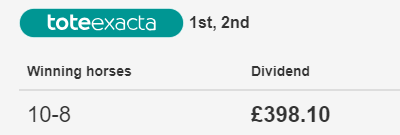 This is the same as a bookies forecast in that you need to select the top 2 horses in the right order. There are 3 variations of this that include single Exacta, Combination Exacta and Banker Exacta.
This is the same as a bookies forecast in that you need to select the top 2 horses in the right order. There are 3 variations of this that include single Exacta, Combination Exacta and Banker Exacta.
Tote Trifecta
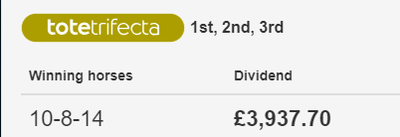 Similar to the Exacta above, the Trifecta requires you to pick the first 3 horses in the right order. Again, there are three types of this bet that includes Single, Combination and Banker.
Similar to the Exacta above, the Trifecta requires you to pick the first 3 horses in the right order. Again, there are three types of this bet that includes Single, Combination and Banker.
Tote Quadpot

The Quadpot will run once on each days racing from a meeting selected by the Tote. The aim is to choose 4 horses to place in each of the 4 last races for that card.
Tote Placepot

The Placepot is an extension of the Quadpot, except it requires you to choose the places of the first 6 races at a meeting. Usually you will find this to be every race within a meeting as most include 6 races. They can include as many horses for each race as they wish, but with each will increase the cost of the initial stake.
Tote Jackpot

The Tote Jackpot is where you need to pick the winners of the first 6 races at a meeting. There are no places for this bet and the jackpot runs everyday. If the jackpot hasn’t been won then it rolls over to the following day.
Tote Scoop6
 The Scoop6 is similar to that of the jackpot, except the races are chosen by the Tote team from a number of races and meetings held throughout the country on that day. Again, any jackpots that haven’t been won will be rolled over.
The Scoop6 is similar to that of the jackpot, except the races are chosen by the Tote team from a number of races and meetings held throughout the country on that day. Again, any jackpots that haven’t been won will be rolled over.


